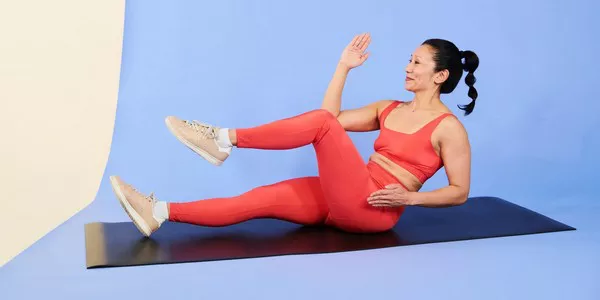Embarking on a fitness journey often involves a combination of cardiovascular exercise and targeted muscle training. However, not all cardio exercises are created equal when it comes to engaging and strengthening the glutes. In this article, we’ll delve into the realm of glute-specific cardio, exploring what can be considered the worst cardio exercises for glutes. From potential drawbacks to safer and more effective alternatives, we’ll guide individuals in making informed choices to optimize their cardiovascular workouts while prioritizing glute engagement and development.
1. Long-Distance Running: A Glute Oversight in Marathon Training
Long-distance running, while a revered form of cardiovascular exercise, may not be the most effective for targeting and strengthening the glutes. The repetitive nature of running primarily engages the muscles in the lower limbs but may not activate the glutes to their full potential. Additionally, the endurance-focused nature of long-distance running can lead to muscle imbalances, with certain muscle groups compensating for others. Individuals seeking to enhance their glutes may find that incorporating other forms of cardio that specifically target these muscles, such as sprinting or hill running, yields better results.
2. Traditional Cycling: Pedaling Past Glute Engagement
Traditional cycling, whether on a stationary bike or a road bike, is a popular choice for cardiovascular exercise. However, this form of cycling may not be the most efficient at engaging the glutes. The continuous circular motion of pedaling tends to activate the quadriceps and hamstrings more prominently than the glutes. While cycling provides excellent cardiovascular benefits, individuals aiming to focus on glute development may benefit from variations such as spinning classes that incorporate standing sprints and resistance adjustments, emphasizing the engagement of the glute muscles.
3. Stair Climbing: A Mixed Bag for Glute Activation
Stair climbing, while an effective way to elevate the heart rate and engage the lower body, can be considered a mixed bag when it comes to glute activation. While ascending stairs involves the use of the glutes, the range of motion and the angle of the climb may not optimally target these muscles. Additionally, individuals may tend to rely more on the quadriceps and calves during stair climbing, diminishing the emphasis on the glutes. To enhance glute engagement, incorporating exercises like step-ups or using a stair climber machine with adjustable resistance can provide a more targeted approach.
4. The Elliptical Trainer: Missing the Mark on Glute Activation
The elliptical trainer, a low-impact and full-body cardio machine, may fall short in terms of targeting the glutes. While the elliptical motion engages multiple muscle groups, including the legs and arms, the glutes may not receive sufficient activation, especially when compared to exercises that specifically target these muscles. Individuals seeking to prioritize glute development may complement elliptical training with additional exercises such as lunges, squats, or incorporating resistance bands to enhance glute activation during their workout routine.
5. Jumping Jacks: A Limited Impact on Glute Muscles
Jumping jacks, a classic and simple cardio exercise, may not effectively target the glute muscles. The primary movement of jumping jacks involves lateral leg movement and arm coordination, with less emphasis on the glutes. While jumping jacks contribute to overall cardiovascular fitness and calorie burning, they may not be the go-to choice for individuals aiming to build and strengthen their glutes. Including exercises like jumping lunges or squat jumps can offer a more glute-centric approach to cardiovascular workouts.
6. High-Intensity Interval Training (HIIT): The Glute Consideration
While High-Intensity Interval Training (HIIT) has gained popularity for its efficiency in burning calories and improving cardiovascular fitness, not all HIIT exercises equally engage the glute muscles. Certain HIIT routines, particularly those focused on upper body movements or core exercises, may not activate the glutes to the desired extent. To ensure a comprehensive glute workout within a HIIT framework, incorporating exercises such as burpees, mountain climbers, or kettlebell swings can effectively engage the glute muscles while reaping the benefits of interval training.
7. Swimming: A Low-Impact Cardio Option with Glute Limitations
Swimming, known for its low-impact nature and full-body engagement, may not be the most effective for targeting the glutes. The leg movements involved in swimming, such as flutter kicks or breaststroke, tend to activate the quadriceps and hamstrings more prominently than the glutes. While swimming provides excellent cardiovascular benefits and is gentle on the joints, individuals looking to specifically develop their glutes may find land-based exercises like squats, lunges, or leg presses more suitable for their goals.
8. Walking: A Steady Stride with Limited Glute Emphasis
Walking, a fundamental and accessible form of cardiovascular exercise, may offer limited engagement of the glute muscles. While walking does involve the use of the leg muscles, the glutes may not be as actively recruited compared to exercises with a greater range of motion or resistance. To enhance glute activation during walking, individuals can incorporate strategies such as walking uphill, incorporating lunges or brisk walking intervals, or using ankle weights to add resistance. These modifications can elevate the intensity and engage the glutes more effectively.
9. Aerobic Dance Classes: A Cardio Party with Glute Potential
Aerobic dance classes, often characterized by lively choreography and energetic movements, have the potential to engage the glute muscles. However, the effectiveness in targeting the glutes depends on the specific dance routines and movements included in the class. While some dance steps may activate the glutes, others may place greater emphasis on other muscle groups. Individuals seeking to maximize glute engagement during aerobic dance can choose classes with routines that involve squats, hip thrusts, or lateral leg movements to ensure a well-rounded and glute-focused workout.
10. Jump Rope: A Simple Cardio Tool with Glute Modifications
Jump rope, a straightforward and efficient cardio exercise, may not be the first choice for glute activation. The repetitive jumping motion primarily engages the calves and quadriceps, with less emphasis on the glutes. However, individuals can modify their jump rope routine to incorporate glute-targeting movements. Adding variations like high knees, jumping lunges, or side-to-side jumps can effectively engage the glute muscles while maintaining the cardiovascular benefits of jump rope exercises.
11. Cycling Classes: A Spin on Glute Engagement
While traditional cycling may not be the most glute-centric cardio exercise, cycling classes, commonly known as spinning, offer a more dynamic and engaging option. In spinning classes, instructors often incorporate standing sprints, resistance adjustments, and varied movements that target the glutes more effectively. The combination of seated and standing positions, along with adjustments in speed and resistance, creates a more comprehensive lower body workout that engages the glutes to a greater extent compared to traditional cycling.
12. Kickboxing Workouts: A High-Energy Cardio Option with Glute Activation
Kickboxing workouts, characterized by dynamic movements, kicks, and punches, can provide an effective cardiovascular workout with the potential for glute engagement. Kicking movements, in particular, activate the glute muscles, contributing to a more comprehensive lower body workout. Individuals participating in kickboxing classes or incorporating kickboxing moves into their routine can benefit from the high-energy nature of the workout while targeting the glutes through powerful and controlled kicking motions.
Conclusion
In conclusion, achieving optimal cardiovascular fitness while targeting glute development involves thoughtful exercise selection and modification. While some cardio exercises may not be the most effective for engaging the glutes, individuals can customize their workouts to ensure a balanced approach. Incorporating glute-specific exercises alongside cardiovascular activities can create a well-rounded fitness routine that addresses both cardiovascular health and muscle development. Whether choosing spinning classes, kickboxing workouts, or modifying traditional exercises, the key lies in tailoring the cardio routine to align with individual goals and preferences, ultimately optimizing overall fitness and glute strength.
[inline_related_posts title=”You Might Be Interested In” title_align=”left” style=”list” number=”6″ align=”none” ids=”4049,3986,4015″ by=”categories” orderby=”rand” order=”DESC” hide_thumb=”no” thumb_right=”no” views=”no” date=”yes” grid_columns=”2″ post_type=”” tax=””]
































